Game Changers of the 2010s
Top 10 Most Important Video Games of the 2010s!
This list counts down the most important video games released between 2010 and 2019. The 2010s was remarkably similar to the previous decade in many regards. New consoles from Sony and Microsoft felt like incremental upgrades over their predecessors, and they didn’t necessarily allow for entirely new gameplay experiences. On the handheld side, the 3DS and Vita felt like natural evolutionary steps as well. The Wii U was arguably the most experimental console of the decade, but it was an unmitigated disaster. The arrival of the Nintendo Switch in 2017 completely changed the landscape of the console war, and many other aspects of the gaming world were changed during the 2010s. Mobile gaming became even more important, and the penetration of smart devices increased four-fold over the course of the decade. The PC gaming scene was also given a boost, thanks largely to the rise of digital storefronts like Steam. The social aspects of the industry changed too, and the emergence of the battle royale genre defined the latter half of the decade. It even became trendy to watch people play video games, and streaming platforms like Twitch changed the way that games were marketed. More people than ever before were playing games in the 2010s, but this isn’t entirely positive. As freemium pricing models lowered the barrier of entry for customers, publishers found other revenue streams in the from of lootboxes, microtransactions, and predatory gacha mechanics. As the decade drew to a close, “games as a service” pricing models were becoming a reality and the prospect of cloud gaming was looming on the horizon. Sales charts were dominated by a handful of evergreen titles in the 2010s, but the way we play and pay for games was changed forever.
10
Apex Legends
2019
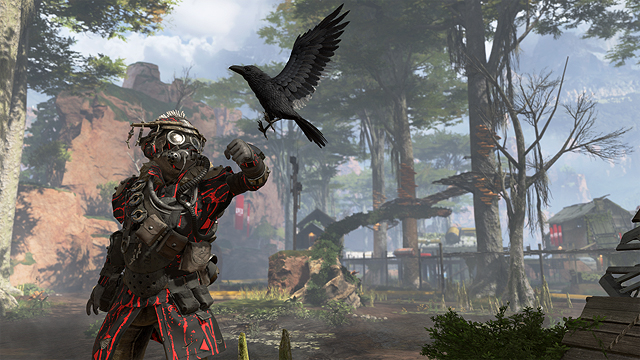
Apex Legends is a free-to-play first-person shooter battle royale game from Respawn Entertainment that’s set in the same universe as Titanfall. The game places up to 20 three-person squads (or 30 two-person duos) on an island and has them compete against each other in a game of survival. After landing on the island, players have to search for weapons and supplies. The island shrinks over time, however, so players will eventually be forced to confront each other. The basic concept is almost exactly the same as PlayerUnknown’s Battlegrounds and Fortnite Battle Royale, but Apex Legends featured a more compelling cast of characters to play as. These characters had unique abilities that were tailor-made for certain tasks, and this worked well within the game’s squad-based framework. Although Apex Legends was an interesting take on the battle royale genre, the main reason it’s being mentioned on this list is because of how it was marketed. Instead of relying on traditional advertising strategies, Electronic Arts generated hype by paying social media influencers to talk about the game. (They reportedly paid Ninja a cool million to play the game on launch day!) This strategy paid huge dividends, as the game surpassed a million players within eight hours of its release. 25 million people had played the game within a week, and 50 million had jumped in during its first month. It turns out that social media influencers have way more impact than traditional ad campaigns, and the success of Apex Legends completely changed the way the industry looked at marketing.
9
Overwatch
2016
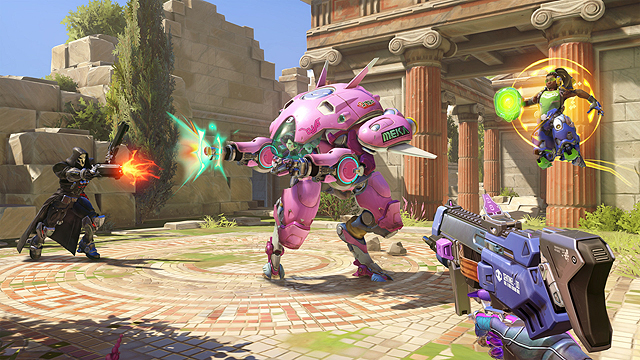
Overwatch is a team-based hero shooter in the vein of Team Fortress 2 that features a roster of aspirational characters. (The game launched with 21 heroes in 2016, and the number expanded to 32 by the end of the decade.) Each character has their own unique abilities, and this allows for various gameplay styles to be implemented. Players have to work together in order to succeed, however, so it’s important for each player to choose a hero that fits their designated role within the team. The emphasis on teamwork was ideal for the world of esports, and there were massive prize pools up for grabs in the Overwatch League. If I would have known that you could get rich by playing video games, I wouldn’t have wasted so much time studying! In any regard, the success of Overwatch cannot be denied. Its open beta drew in nearly 10 million players, and Blizzard reported over $1 billion in revenue during its first year of release. Even if you’re not fond of hero shooters or the competitive gaming scene, you should be able to appreciate Overwatch for all of the high quality porn it has inspired. The game is basically synonymous with Rule34 artwork, and if that’s not a sign of great character design, then I don’t know what is!
8
Fate/Grand Order
2015

Fate/Grand Order is a free-to-play Japanese mobile game based on Type-Moon’s Fate/stay night franchise. The game features turn-based battles and puts players in command of various “Servants” that are based on historical, literary, and mythological figures. Each Servant has their own scenario, and the narrative is presented in a visual novel format. None of this sounds especially groundbreaking, but the game was a license to print money. Fate/Grand Order launched in the summer of 2015, and it had grossed $4 billion by the end of the decade! The success of the game speaks to the power of anime tiddies. Most of the aforementioned Servants are sexualized women, and they are obtained via gacha mechanics. Players summon Servants with in-game currency that can be obtained through gameplay or by spending real money. The Servants appear randomly, however, so most players will have to spend a lot of time or money in order to get the Servants they want. People are willing to fork over tons of money for sexy illustrations of anime waifus, and it’s not a coincidence that the sluttier variants are more difficult to obtain. Critics have complained about the characters being oversexualized, and I’ll concede that some of the Servants look kind of young. You can’t argue with success, though. Ironically, the game’s publisher is owned by Sony. While Sony has been cracking down on anime characters and forcing Japanese publishers to censor their games, waifus were secretly their biggest cash cow throughout the 2010s. This list just wouldn’t be complete without at least one gacha game. Gacha mechanics are just as predatory as loot boxes, but they’re an integral part of mobile gaming culture all the same.
7
Among Us
2018
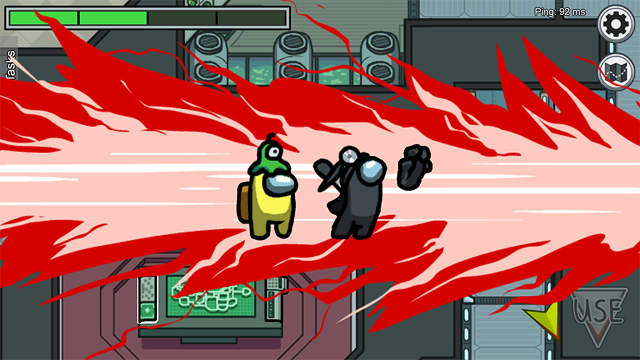
Among Us is an online social deduction game in which players assume the role of crewmates on a spaceship or facility. It draws heavy inspiration from hidden identity games like Mafia or Secret Hitler, and the premise is thematically similar to the iconic “blood test” scene from The Thing. Various tasks have to be completed in order to survive – ranging from maintenance work to engine refueling – but some of the crewmates are actually imposters! The imposters can covertly sabotage the missions or murder the crewmates outright, and the object is to correctly identify them before they can cause too much damage. To that end, players can call emergency meetings and eliminate suspected imposters via a plurality vote. Crewmates can rely on surveillance systems to help identify the imposters, and the players can openly discuss who they believe is an impostor based on the available evidence. Among Us was released for iOS and Android devices in June of 2018 and was ported to Windows later that year. Although the game didn’t get much attention at launch, it rose to prominence in 2020 after popular streamers started playing it on platforms like Twitch and YouTube. It proved to be a perfect game for the COVID-19 pandemic since it allowed people to socialize with each other during the government-imposed lockdowns. The game had amassed nearly 500 million players as of November 2020, and it became a bona fide cultural phenomenon. (The free-to-play mobile version accounted for 97% of the players, but the userbase was still astronomical no matter how you slice it.) Among Us didn’t make an immediate impact and was virtually unknown in the 2010s, but its belated success illustrates how streaming platformers and content creators can pluck a game out of obscurity and thrust it into the spotlight years after its release.
6
Dark Souls
2011
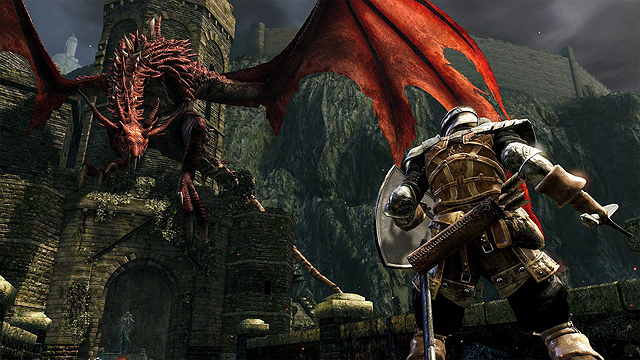
The first video game I ever played was Ghosts n’ Goblins on the NES. It was one of the hardest games of all time, but I had no frame of reference when I played it so I just assumed that all games were difficult. (This was an era where arcades were thriving, and their business model was based around an elaborate “pay to win” scheme where players had to feed money into the machines!) During my formative gaming years, I fought the eagles in Ninja Gaiden, raced through the Turbo Tunnel in Battletoads, and went toe-to-toe with Mike Tyson himself. As the industry grew, video games became a lot easier in order to reach a wider audience. That’s why Dark Souls felt like a window to the past when it launched in 2011. The atmospheric action-RPG was praised for its intricate level designs and its large open-world environments, but not everyone was fond of the combat. The game was unforgiving, and its steep difficulty curve showed little regard for casual players. It was rare for a game to require so much patience in 2011, but fans rallied behind the concept. In the years that followed, nearly every difficult game was compared to Dark Souls. Hollow Knight was the Dark Souls of Metroidvanias, Cuphead was the Dark Souls of platformers, and DiRT Rally was the Dark Souls of racing games. In essence, Dark Souls made difficult video games fashionable again. It’s worth noting that Dark Souls is the spiritual successor to Demon’s Souls and borrows many elements from it. Dark Souls is being recognized instead simply because it made a bigger impact on the industry.
5
Candy Crush Saga
2012
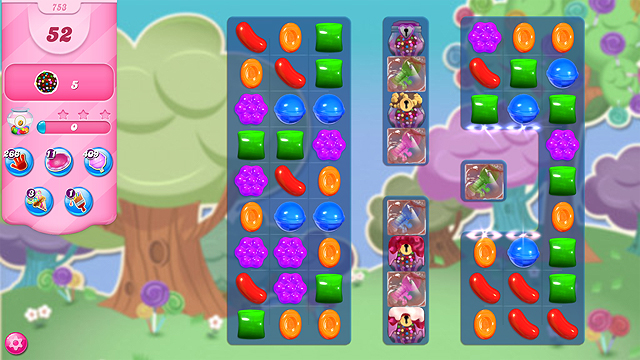
Candy Crush Saga is a free-to-play match-three puzzle game that was based on an earlier browser game. The goal of the game is to swap adjacent pieces of candy so that similar colors line up with each other. After candies are eliminated from the playing field, other candies fall into the empty spaces and allow for new matches to be made. If you plan ahead, there’s tremendous potential to create chain reactions that will eliminate even more candies. Each level presents players with a new objective, such as achieving a minimum score or clearing the board in a fixed number of moves. Although it’s possible to play the game without spending any money, players have the option of purchasing “special actions” if they get stuck on a particular stage. The game is notorious for its unfair difficulty spikes, so millions of players have been compelled to bribe their way to victory. I’ve never been a fan of freemium pricing models, but the audience didn’t seem to mind. At its peak, Candy Crush Saga was earning over a million dollars a day! Puzzle games are a great fit for mobile devices due to their pick-up-and play nature, but I don’t think anyone was expecting Candy Crush Saga to make such a big impact. Within five years of its release, Candy Crush Saga and its various spinoffs had been downloaded 2.7 billion times! Paying for help in a puzzle game seems counter-intuitive to me, but the developers clearly knew what they were doing. The game has a broad fanbase (comprised mostly of broads) and I’ll just have to accept that I wasn’t the intended audience.
4
PlayerUnknown’s Battlegrounds
2017
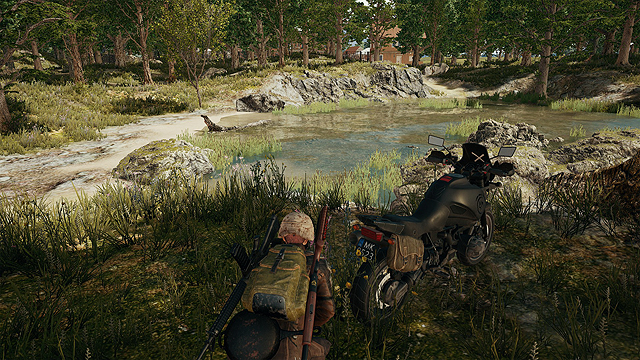
Brendan Greene, known by his online alias “PlayerUnknown,” was active in the modding community in the early 2010s, and many of his contributions drew inspiration from the Japanese film, Battle Royale. He had envisioned large-scale, last-man-standing deathmatches where players would fight for survival, and this vision finally came to fruition in 2017 with the release of PlayerUnknown’s Battlegrounds. In the game, up to a hundred players parachute onto an island, scavenge for weapons, and contend with other players while trying to survive. The size of the game’s map decreases over time, so the fighting tends to become more and more intense as the rounds progress. Naturally, the last player (or team) standing is deemed the winner. Greene felt that most conventional shooters were too predictable, since the maps were relatively small and easy to memorize. By creating larger maps and embracing random elements, he hoped to create something with a higher degree of replayability. PUGB became an overnight sensation, and its influence on the industry was instantaneous. The game was basically the template for Fortnite Battle Royale, and other developers were tripping over themselves to release their own take on the battle royale concept. The game hit early access in March of 2017 and was officially released in December. By the year’s end, there were already more than 30 million PUBG players in the world, and the game had raked in over $700 million. Those numbers only continued to increase, and the mobile version of the game had 300 million downloads in 2018 alone! Fortnite stole a lot of the game’s thunder and appealed to a younger audience, but few games have had a more immediate impact on the industry than PUBG.
3
Pokémon GO
2016
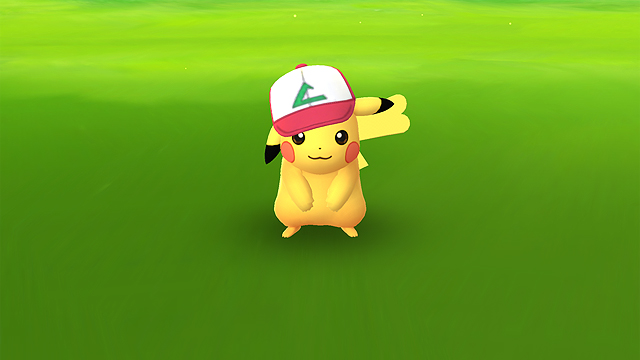
Pokémon GO is an location-based augmented reality game for iOS and Android devices. Niantic had experience with location-based apps, but their partnership with the Pokémon Company paved the way for a legitimate global phenomenon. Pokémon GO borrows a lot of mechanics from the mainline Pokémon games, and players are still tasked with locating, capturing, training, and battling the eponymous pocket monsters. Concepts like Pokémon evolution were carried over from previous games, and players could still trade their Pokémon with other individuals. Instead of catching wild Pokémon in a virtual world, however, Pokémon GO‘s location-based AR technology lets players locate Pokémon in real-world locations! Pokémon nests can be found almost anywhere, and players can obtain valuable items by visiting “PokéStops” that are located at various landmarks. The game’s freemium business model supports in-app purchases if exploration isn’t your thing, but 100% of my in-game goods were obtained via PokéStops. Pokémon GO wound up being the most effective exercise app I’ve ever used, and I would typically spend hours a day walking around my city in my ongoing quest to catch ’em all. The game had a great sense of community around it, and I loved the concept of battling at Pokémon Gyms and claiming territory for your chosen team. I also liked banding together with other players in order to take out raid bosses. Pokémon GO was a legitimate social phenomenon that promoted physical activity and helped local businesses grow due to increased foot traffic. By early 2019, the game had amassed over a billion global downloads and more than $4 billion in revenue. It’s sounds like hyperbole, but Pokémon GO was truly able to bring people from all walks of life together.
2
Fortnite Battle Royale
2017
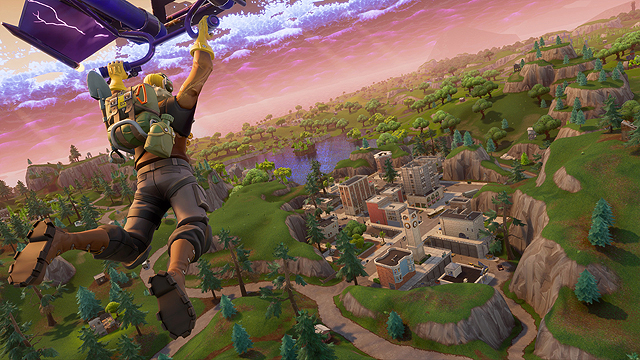
Fortnite is a third-person shooter with several different gameplay modes. Save the World is a cooperative survival mode where players work together to fight zombie-like creatures. This mode incorporates elements from the tower defense genre, and the main concept involves setting traps and building fortifications. Fortnite Creative is exactly what it says on the tin, and it gives players complete freedom to create worlds and battle arenas. Without question, Battle Royale is the driving force behind the Fortnight phenomenon. This mode allows up to 100 players to compete against each other after being dropped onto a large island. After landing, players have to scavenge for weapons, resources, and vehicles while trying to eliminate their competition. They’ll also have to be mindful of the toxic storms that gradually encroach on the island, and the safe area of the map constantly shrinks over the course of each round. Battle Royale was basically an afterthought, and it was rushed into early access following the success of PlayerUnknown’s Battlegrounds. The mode was an instant hit, however, and it’s easy to see why. You might scoff at the game’s simple graphics, the random aiming mechanics, or the inane dancing, but these things contributed to Fortnite‘s success. You could run the game on a potato, the mechanics helped even the playing field for low skilled players, and kids apparently love stupid dances. Epic Games realized that the game was a perfect fit for young children, so they wisely adopted a free-to-play model funded by microtransactions. Fortnite was downloaded 78 million times within its first year of release, and it amassed nearly 350 million across the globe by the end of the decade. These numbers are even more impressive when you consider the average Fortnite player spends upwards of $80 on DLC!
1
Minecraft
2011

With global sales exceeding 200 million, Minecraft could legitimately be described as the most successful video game of all-time. The ambitious sandbox game drops players into vast procedurally generated worlds where everything is made of blocks. Players can extract materials, craft tools and items, and rearrange the entire world as they see fit. The game has different modes that incorporate elements from survival and platforming games, but the open-ended gameplay was the biggest reason why Minecraft became so popular. The game encourages creativity and exploration, and its appeal could be likened to LEGO in many regards. Players can even collaborate with each other on projects, since the multiplayer servers feature shared, persistent worlds. Even if you’re not a creative person by nature, Minecraft still gives you a near-infinite number of worlds to explore. The possibilities are endless, and its unpredictability explains its sustained popularity. Fans even enjoy watching other people play the game, and there was one month where Twitch users watched over 50 million hours of Minecraft content. Minecraft stands out in a sea of uninspired AAA titles, and it’s low-resolution “voxel” aesthetic proves that games don’t need inflated budgets to be successful. Minecraft was officially launched in 2011 and it closed the decade with more than 125 million active players. It stayed relevant throughout the entire decade, so there’s no game that would be more appropriate for the number one spot on this countdown. Oh look, a free iPad!


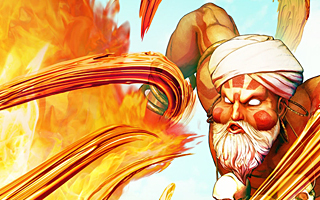
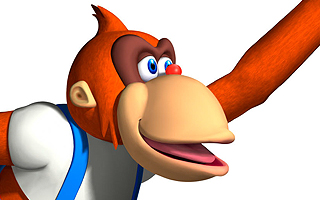
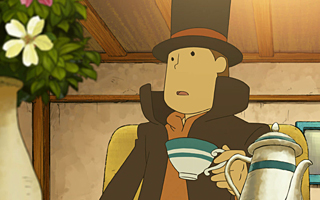
Do you agree with this list? Let us know what you think by leaving a comment below. Your opinion matters!